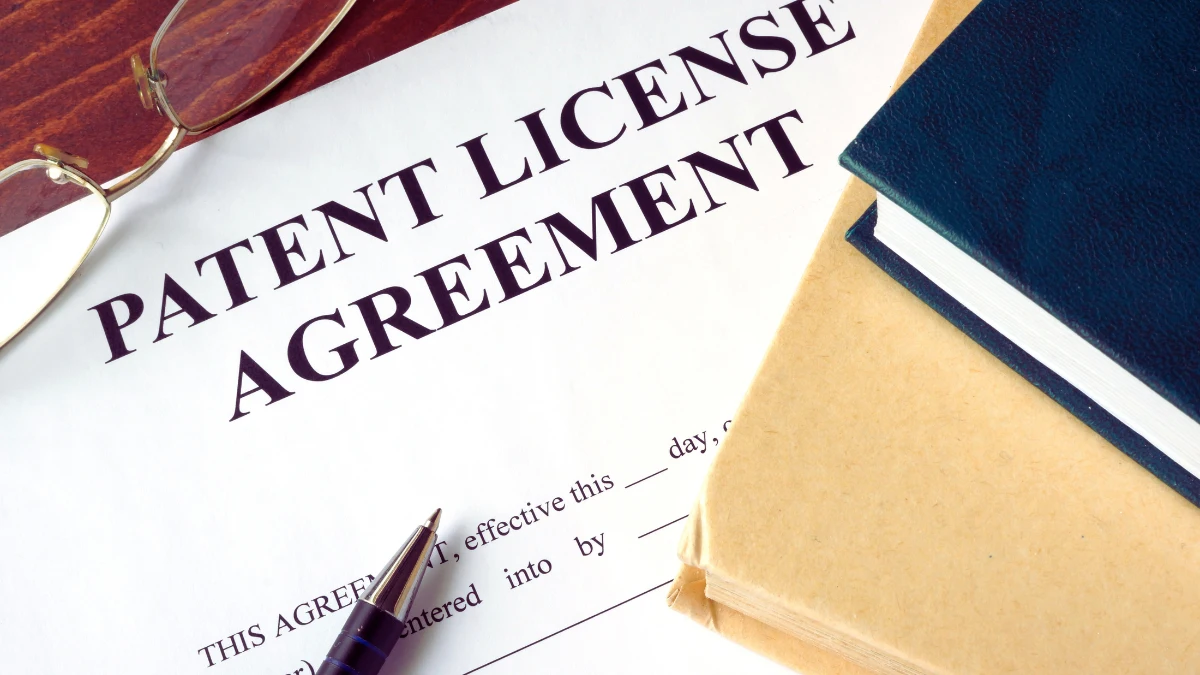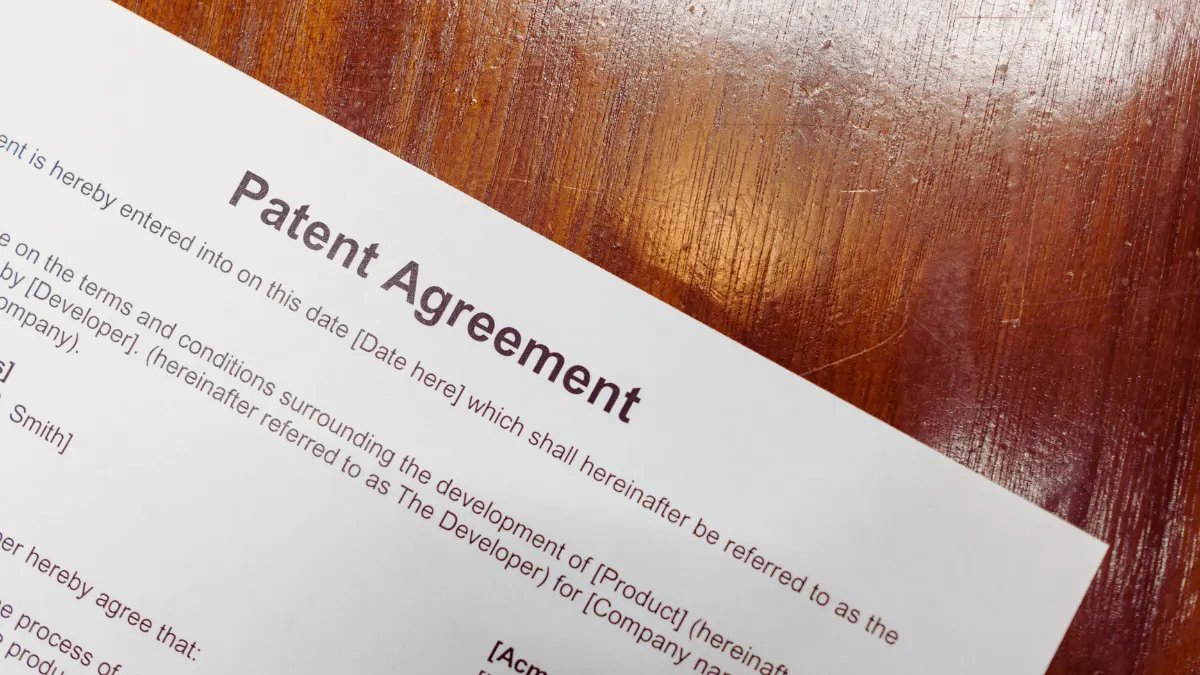Most people chase rental properties and dividend stocks for passive income, watching their returns crawl along at 3-8% annually.
You probably feel the same frustration I did, wondering if there’s a better way to build wealth without trading time for money.
Here’s what changed everything: I discovered a single patent licensing deal that generated over 20% ROI while I did nothing.
No tenants calling at midnight. No market crashes wiping out gains. Just quarterly royalty checks that dwarfed my entire investment portfolio.
Let me show you how this unconventional strategy works and introduce you to three other unexpected income streams that most investors never consider.
My Highest-Yielding Passive Income Stream: Patent Licensing

I stumbled upon something far more lucrative: licensing a utility patent for an industrial component I invented.
The royalty checks consistently outperformed my entire stock portfolio, generating over 20% annual ROI on my initial patenting investment once the licensing deal was activated.
Stream Overview: Patent Licensing

Patent licensing transforms intellectual property into recurring revenue streams. You grant companies legal rights to manufacture, use, or sell your patented invention in exchange for royalty payments.
This arrangement protects businesses from costly infringement lawsuits while generating passive income for patent holders.
The mechanism operates like intellectual property rental. Companies need your technology for their products or processes.
Rather than developing alternatives or risking legal action, they pay licensing fees. These payments arrive regularly based on their sales volume, production quantities, or agreed-upon terms.
True passivity emerges after securing the patent and finalizing licensing agreements.
No manufacturing, marketing, or customer service responsibilities exist. Your only tasks involve depositing checks and conducting annual royalty audits when contractually required.
How It Worked: The Royalty Engine

My invention solved a persistent wear-and-tear problem in manufacturing machinery. Specific components would fail prematurely, causing expensive downtime and frequent replacements.
After documenting my solution meticulously, I invested approximately $15,000 in legal fees and prosecution costs over three years to secure a utility patent.
Research revealed five major manufacturers producing machines incorporating this problematic part. I contacted their R&D and intellectual property departments directly.
One company immediately recognized the value since my solution addressed frequent customer complaints about component failures.
Negotiations resulted in a licensing agreement featuring a 5% royalty on wholesale prices for parts incorporating my invention. The contract included minimum annual guarantees and quarterly reporting requirements.
Once their product line launched, royalty checks arrived consistently based purely on their sales performance, requiring zero ongoing effort from me.
Getting Started: From Idea to Income

Building a patent licensing business requires systematic execution across multiple phases:
• Identify Problems & Document Solutions: Find genuine market problems within existing industries. Maintain detailed lab notebooks documenting your invention process, including dates, sketches, and testing results.
• Patent Search & Application Process: Hire experienced patent attorneys specializing in your field. Conduct thorough prior art searches before filing. Submit provisional patent applications first to secure filing dates, then convert to non-provisional applications within twelve months.
• Navigate Patent Prosecution: Work closely with attorneys through USPTO examination processes. Expect 2-5 years for patent grants, with legal fees ranging from $5,000-$15,000 beyond initial filing costs.
• Research Potential Licensees: Identify companies benefiting commercially from your invention. Study competitors, suppliers, and manufacturers in relevant markets.
• Develop Professional Presentations: Create concise documents explaining problems, solutions, patent status, and commercial benefits for potential licensees.
• Execute Outreach Campaigns: Contact business development, R&D, and IP strategy departments through email, LinkedIn, or trade shows. Persistence and professionalism are essential.
• Negotiate Terms & Finalize Agreements: When interest develops, negotiate royalty rates, upfront fees, minimum payments, territorial rights, and field-of-use restrictions. Hire specialized IP licensing attorneys for contract negotiations.
• Monitor Royalty Collection: Track royalty statements and maintain audit rights once products launch and licensing agreements activate.
Key Hurdles & Challenges

Patent licensing presents substantial obstacles that eliminate most potential participants:
• Significant Upfront Investment: Complete patenting costs range from $10,000-$50,000, including legal fees, prosecution expenses, and licensing attorney costs.
• Extended Time Horizons: Years pass between initial ideas and first royalty payments due to patent pendency periods and licensee product development cycles.
• Licensee Identification Difficulties: Most patents never generate licensing revenue. Success requires targeted research, compelling presentations, and exceptional persistence.
• Complex Legal Negotiations: License agreements involve intricate legal documents. Without expert counsel, inventors often accept unfavorable terms or miss significant opportunities.
• Enforcement Risks: Patent litigation costs can exceed $500,000 when licensees underpay or unlicensed companies infringe.
• Patent Validity Challenges: Licensees or infringers can challenge patent validity through USPTO proceedings, requiring expensive defense efforts.
Success Ratio & Earnings Potential

Patent licensing statistics reveal sobering realities alongside extraordinary opportunities:
• Low Overall Success Rates: Industry estimates suggest only 2-5% of granted patents generate significant licensing revenue. Success demands commercially viable solutions, strong patent protection, and effective licensing execution.
• Exceptional Earning Potential: Successful patents can generate extraordinary returns. Royalty rates typically range from 1-10% of wholesale prices, depending on industry and invention value.
• Real-World Example: My 5% royalty on $200 wholesale parts generates $100,000 annually when licensees sell 10,000 units. A total investment of $35,000 produces massive ROI once deals are activated.
• High-Risk, High-Reward Profile: Most inventors receive zero returns on patent investments. However, successful licensing can generate decades of passive income far exceeding traditional investment returns.
• Market-Dependent Variables: Earnings fluctuate based on licensee performance, market conditions, and competitive dynamics beyond the inventor’s control.
Scaling Opportunities

Patent licensing offers multiple pathways for income expansion:
• Multiple Licensee Strategy: License identical patents to different companies in non-competing markets or separate geographic territories.
• Improvement Patent Development: File follow-on patents for invention improvements, extending protection periods and creating additional licensing opportunities.
• Portfolio Building Approach: Develop multiple inventions and create patent portfolios for bundle licensing arrangements.
• Strategic Litigation Consideration: Suing infringers can force licensing agreements with back royalties, though this approach involves significant costs and risks.
• Cross-Licensing Negotiations: Exchange patent rights with other inventors or companies to access broader markets and reduce licensing costs.
Why It’s Underrated & Unexpected

Patent licensing remains overlooked despite its potential for several reasons:
• Lack of Glamour: Unlike cryptocurrency or day trading, patent licensing involves technical documentation, manufacturing knowledge, and legal complexities that seem boring to most investors.
• Perceived Complexity: The patent process and licensing negotiations appear daunting and inaccessible to people without technical or legal backgrounds.
• Extended Patience Requirements: Most investors lack patience for strategies requiring years between initial investment and revenue generation.
• Niche Market Focus: High-value inventions often exist in mundane industrial applications rather than exciting consumer products.
• Asymmetric Risk-Reward Profile: When successful, the payoff relative to the ongoing effort is immense since licensees handle all manufacturing, marketing, sales, and distribution responsibilities.
Three More Unexpected Passive Income Streams
Beyond patent licensing, several other unconventional strategies can generate substantial passive income. These opportunities require different skill sets and risk profiles than traditional investments.
1. Peer-to-Peer Lending

Secured business lending through online platforms offers attractive returns while mitigating risks through asset backing. Instead of lending to individuals, you fund businesses that pledge collateral like invoices, equipment, or property.
This approach typically yields higher returns than traditional bonds or savings accounts.
Platforms like Funding Circle and Yieldstreet connect investors with vetted businesses seeking capital.
You can diversify across multiple loans, spreading risk while earning steady returns. The businesses repay with interest over predetermined periods, usually ranging from six months to five years.
Returns generally fall between 5-12% annually, depending on loan terms and risk levels.
Default rates exist, but secured loans provide collateral recovery options. Success depends heavily on platform due diligence, loan diversification, and economic conditions.
Most platforms offer automated investing features, making the process largely hands-off after initial setup.
2. Affiliate Marketing via Niche Websites

Creating specialized websites that promote products through affiliate links can generate ongoing commissions without constant content creation.
Focus on evergreen niches where people consistently search for solutions to specific problems. Topics like health conditions, hobby equipment, or professional tools often provide stable traffic over time.
Building authority requires producing genuinely helpful content that solves real problems. Search engines reward websites that consistently answer user questions with detailed, accurate information.
Once established, these sites can earn commissions from product recommendations for years without major updates.
Revenue comes from affiliate networks like Amazon Associates, ShareASale, or direct partnerships with companies. Commission rates vary widely, from 1-2% for electronics to 30%+ for digital products.
Success requires understanding search engine optimization, user intent, and product selection. Most profitable sites focus on high-intent keywords where visitors are ready to purchase rather than just browsing.
3. Licensing Photography or Art

Visual content licensing provides ongoing royalty income from images, illustrations, or designs you create once.
Stock photography platforms, print-on-demand services, and direct licensing to businesses can generate revenue for years after initial creation. Quality matters more than quantity in this competitive market.
Platforms like Shutterstock, Getty Images, and Adobe Stock distribute your work globally while handling sales, licensing, and customer service.
Each download generates royalties, typically ranging from a few cents to several dollars depending on image quality and licensing terms. Exclusive content often commands higher rates than non-exclusive submissions.
Commercial licensing directly to businesses offers the highest earning potential but requires more active marketing.
Many companies need custom photography for websites, marketing materials, or product catalogs.
Building relationships with marketing agencies, web designers, and business owners can lead to recurring licensing opportunities.
Technical skills in photography, editing, and understanding commercial usage rights are essential for success.

